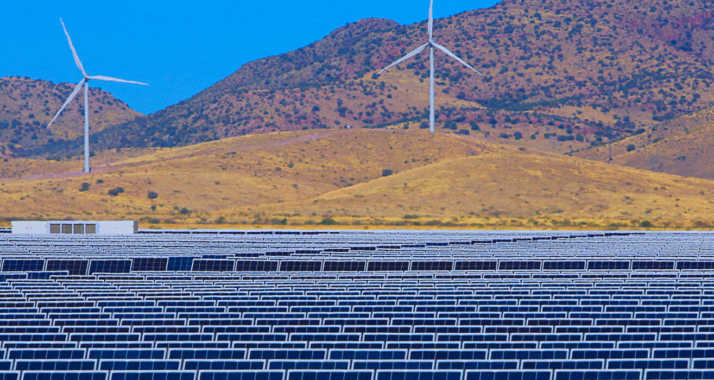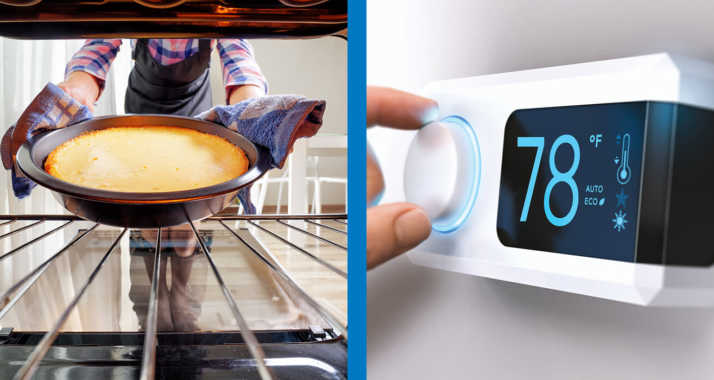
Knowing a few basic but commonly misunderstood energy terms can help you make informed choices to reduce your usage and utility bills.
Electric Usage
The unit of measurement most commonly used to track electric use is the kilowatt hour (kWh). This represents one kilowatt of electricity – or 1,000 watts – supplied for one hour. Kilowatt hours are used to calculate parts of your monthly bill. Leaving a 100-watt light bulb on for 10 hours will consume 1 kWh of energy.
The average UniSource Energy Services residential electric customer uses about 10,000 kWh per year. Because it costs about 11 cents per kWh, average customers pay about $3 per day to power everything in their home.
Gas Usage
Centum Cubic Feet, or CCF, is used to measure the volume of natural gas. Gas meters indicate how many CCFs were used in a billing cycle. To ensure accurate billing, UES and other utilities convert volumetric usage into therms to calculate your gas bill.
British Thermal Units, or BTUs, and therms are measurements of heat. A BTU is the amount of heat required to raise the temperature of one pound of water by one degree Fahrenheit. A therm is the unit of heating value equal to 100,000 BTUs.
The average UES customer’s winter natural gas usage ranges from 50 to 100 therms per month, depending on the size of the home and thermostat settings.
Light Bulbs
Several terms are used to describe the energy usage, power and color associated with a light bulb.
The number of watts indicates the power consumption. Common incandescent bulbs are 40-watt, 60-watt and 75-watt. A 13-watt LED bulb or a 23-watt CFL bulb produces as much light as a 75-watt incandescent bulb.
Lighting power, or output, is measured in lumens. More lumens mean a brighter bulb. A 60-watt soft white incandescent bulb provides about 840 lumens.
The color emitted by a light source is measured in degrees of Kelvin (K). As an object gets hotter, its glowing color shifts, moving from deep reds to oranges and yellows and, ultimately, white. Match flames and low-pressure sodium lamps are 1,700K, while incandescent bulbs range between 2,700K and 3,300K. Outdoor light on an overcast day measures at 6,500K.
Air Conditioners
An air conditioner’s Seasonal Energy Efficiency Ratio (SEER) indicates how much cooling it produces for each unit of energy it consumes, with a higher number standing for greater efficiency.
When purchasing an air conditioner, you should take into account both the overall power and the efficiency of the unit. It might be helpful to think of these ratings as you would the more familiar terms associated with automobiles.
A SEER rating, which can range from the federal minimum of 14 to the current high of 23, measures operating efficiency – just like a car’s miles-per-gallon rating. The amount of heat an air conditioner can remove each hour is rated in tons – typically 2 to 5 for residential units – which is similar to the horsepower or cylinder count of a car’s engine.
Insulation
The thermal resistance of insulation materials used in building and construction is represented by the R-value. A higher value means more efficient insulation.
The insulation value for traditional walls typically ranges between R13 and R19, while the insulation value for the top of a house typically is between R30 and R38.
Windows
The U-factor is the term used to describe the insulation value of windows. The U-factor is calculated by dividing one by the R-value. The lower the number, the greater the window’s resistance to heat loss.
High performance double-pane windows can have a U-factor of 0.30. For comparison, an old metal casement window might have a U-factor of 1.3.
The Solar Heat Gain Coefficient (SHGC) of a window represents the amount of solar heat allowed through a window on a scale of zero to one. A SHGC of .30 means 30 percent of the available solar heat can pass through a window.






